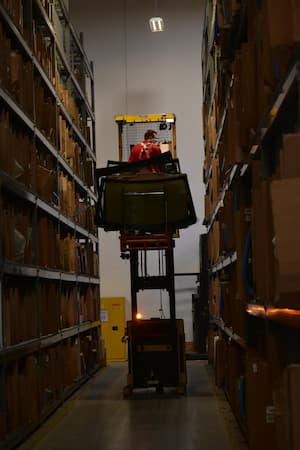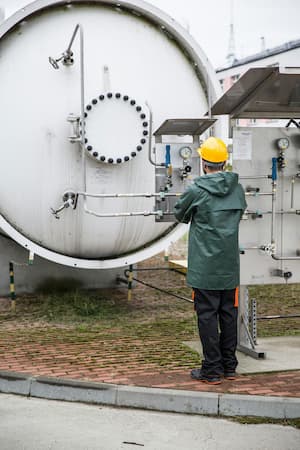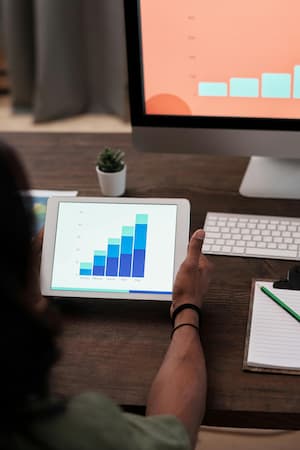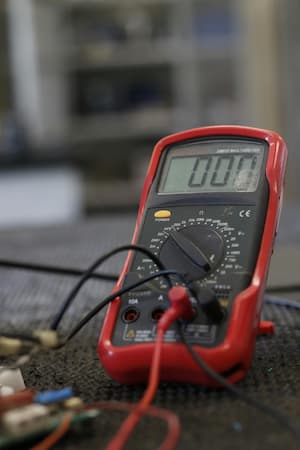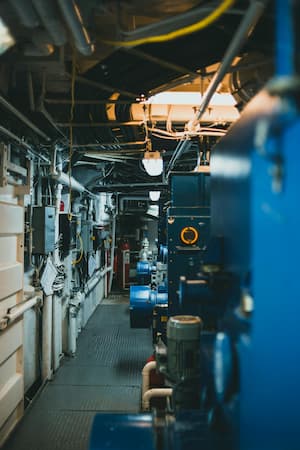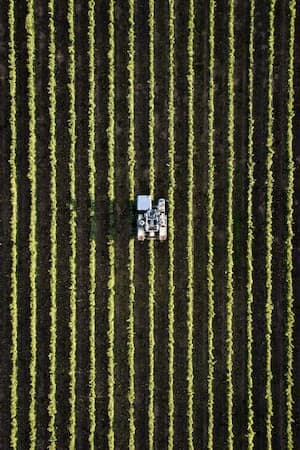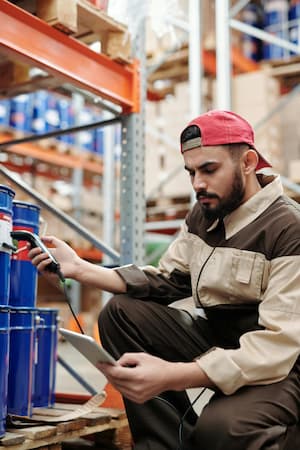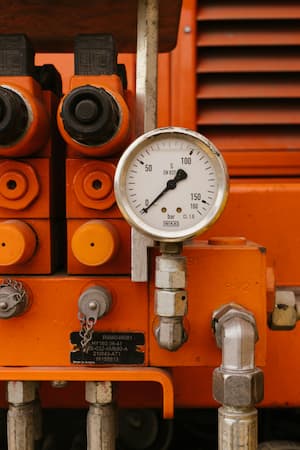Wide range of applications - Discover the use cases of erPUB
Your all-rounder: applications that make the difference
erPUB for
Quality assurance
Purpose
With erPUB, a QA check (quality assurance check) can be performed to ensure that the products in production meet the specified standards. erPUB helps analyze multidimensional test data, operate controls, read codes, and capture digital signals. This ensures that each product has the right quality before it is further processed or delivered.
Connections
Machine Data and Sensors
erPUB collects information from machines and sensors to ensure that the products meet quality standards.
3D Models and 2D Controls
erPUB enables the verification of 3D models and supports the operation of 2D processes by providing relevant data.
Digital Signals
erPUB reads and processes digital signals generated during production to quickly assess quality.
Process
Check 3D models
erPUB compares the produced parts with the 3D models to ensure they are manufactured correctly. This happens in near real-time.
Provide 2D control data
With erPUB, the relevant data for controlling 2D processes, such as aligning and cutting materials, is provided.
Capture signals
erPUB reads digital signals from the machines, for example, whether a weld was made correctly, and quickly indicates whether the part meets quality requirements.
erPUB for
Forklift truck app
Purpose
With erPUB, a forklift app can be developed to help make operations in a production hall more efficient. The app collects and displays important real-time information from machines and the warehouse. This allows forklift drivers to see exactly which material needs to go where and the current status of the machines.
Connections
Machine Data
erPUB collects information directly from production machines.
Barcode/QR Scanner
Forklift drivers can scan barcodes or QR codes to identify materials.
Secure Data Connection
The app securely communicates with other company systems, such as warehouse management.
Forklift Hardware Control
erPUB can also display information from the forklift itself, such as the weight of the load being transported.
Process
Collect data:
The app receives real-time information from the machines in the production hall, such as how much material is needed.
Identify material:
The driver scans the barcode or QR code on the material to be transported.
Process data:
erPUB processes the collected data and displays it in the app.
Display information:
On the forklift's screen, the driver sees all the important information.
Complete transport:
After the material is delivered to the correct location, the app reports the completion of the task back to the central system.
erPUB for
Energy Monitoring
Purpose
erPUB is used to monitor and analyze energy consumption in a production facility. It reads data from Smart meter devices and power meters to provide a detailed overview of energy consumption. This helps to implement energy efficiency measures and optimize energy usage.
Connections
Smart Meter
erPUB reads data from Smart meter devices that measure the energy consumption of individual machines or systems.
Power Meters
erPUB collects and processes data from various power meters that monitor electricity consumption in real time.
'Satellite' erPUB for Data Point
erPUB can be deployed as a distributed solution, where multiple 'Satellite' instances are installed at various measurement points in the facility to collect data locally and transmit it to the central erPUB instance.
Process
Collect Data
The 'Satellite' instances of erPUB collect energy consumption data from SwatMeter and power meters at various points in the production facility. This data is collected locally to minimize the load on the central network.
Data Transmission
The collected data is transmitted from the 'Satellite' instances to the central erPUB instance. This occurs in real time, ensuring that the central instance always has up-to-date consumption data.
Data Processing and Analysis
The central erPUB instance processes the incoming data, aggregates it, and prepares it for analysis. This allows for a detailed overview of energy consumption across different areas of the facility.
Visualize and Monitor Results
The processed data is then forwarded to an energy management system or dashboard, where it can be visualized. Responsible personnel can monitor energy consumption, identify trends, and take optimization measures.
erPUB for
Robot Data Supplier
Purpose
erPUB is used as a data supplier for robots to collect and provide precise information about the production environment. For example, data from the measurement of 3D models is captured and processed to ensure that robots have accurate and up-to-date information for their tasks. This supports robots in efficiently and precisely executing their tasks.
Connections
3D Model Measurement
erPUB collects and processes data from the measurement of 3D models used by robots to determine the exact geometry and position of workpieces.
Process
Capture 3D Data:
erPUB receives data from measurement systems that precisely capture the geometry and position of workpieces in the production environment. This 3D data is transmitted to erPUB in near real-time.
Data Processing:
erPUB processes the collected 3D data, prepares it, and ensures it is available to the robots in an understandable format. This processing may include converting data into coordinates or checking for deviations from the target model.
Data Provisioning:
The prepared 3D data is then transmitted from erPUB to the robots. erPUB ensures that the robots receive the information they need for their tasks in a timely manner, such as for grasping or positioning workpieces.
erPUB for
Visualization
Purpose
erPUB can be used to visualize production and process data clearly and understandably. This enables real-time monitoring of the current status of machines and processes, allowing for data-driven decisions. Visualization helps quickly identify bottlenecks, anomalies, or areas for improvement.
Connections
OPC UA
Connection for capturing real-time data from machines and sensors.
REST
Integration of data from various web services and APIs.
ModBus
Connection to industrial control devices for data collection.
Further Sources
erPUB can flexibly capture and process data from many other sources.
WS/SignalR Reactive Forwarding
erPUB supports reactive data forwarding, meaning it transmits processed data promptly to visualization systems, allowing for quick updates.
Process
Data Collection:
erPUB collects data from various sources, such as machines, sensors, and external web services. This data is captured and processed in near real-time.
Data Processing:
The collected data is filtered, aggregated, and prepared by erPUB for visualization.
Reactive Data Forwarding:
erPUB uses WS/SignalR to promptly transmit the prepared data to visualization systems. This keeps display screens in the production area or control rooms updated without delay from manual refresh.
Display Visualization:
The visualization systems, such as dashboards or control screens, display the data provided by erPUB. This representation helps users monitor the current status of production, identify trends, and respond quickly when needed.
erPUB for
VR Integration
Purpose
erPUB is used to integrate real production and machine data into virtual environments. This enables the creation of a VR application based on current data from the production floor. Users can simulate processes, conduct training, or monitor production workflows in a virtual environment without needing to be physically present.
Connections
Unity Integration
erPUB connects to the Unity engine to integrate real-world data into the VR environment. Unity is used to create 3D scenes and populate them with current production data.
Process
Collect Data
erPUB collects real-time data from machines, sensors, and other sources on the production floor. This data may include machine status, production numbers, or sensor data.
Process Data
The collected data is prepared by erPUB and formatted for processing by the Unity engine. This could include converting machine states into visual representations in the VR environment.
Transmit Data to Unity
erPUB transmits the processed data to the Unity engine, which uses this information to update the virtual environment accordingly. This allows users to interact with or monitor production processes in real time within the VR environment.
VR Interaction
In the VR environment, users can visualize current data, interact with virtual machines, or simulate various scenarios based on real production data. This can be used for training purposes, process optimization, or monitoring tasks.
erPUB for
Measurement Station
Purpose
erPUB is used in a measurement station to capture the results of cable tests and automatically generate PDF reports. These reports document the test results and ensure that the quality and specifications of the cables are verified and proven.
Connections
Cable Measurement Connection
erPUB is directly connected to the measuring devices used to verify the quality and specifications of the cables. It automatically reads the test results.
Process
Capture Test Data
erPUB receives the test results from the connected cable measuring devices. This data includes all relevant measurements such as resistance, insulation, and continuity, which are important for cable quality assurance.
Data Processing
erPUB processes the incoming test data, prepares it, and organizes it into a structured format. This data is then prepared for the creation of a test report.
Generate PDF Report
erPUB automatically generates a PDF report containing the test results and their evaluation. The report may include specific details such as the test time, measured values, and an assessment of whether the cables meet the required standards.
Provide Report
The generated PDF report is stored and can either be sent directly to the responsible parties or archived in a central system. This ensures that test reports are available at any time and can be retrieved when needed.
erPUB for
Overall Equipment Effectiveness
Purpose
erPUB is used in OEE analysis to monitor and analyze the efficiency of machines and production processes. It measures machine downtime and runtime, monitors output, integrates with internal systems like ERP, SCADA, and MES, and enables the visualization and aggregation of collected data. This supports the optimization of production processes and increases overall efficiency.
Connections
Machine and Process Data
erPUB collects data directly from machines and processes to measure their downtime, runtime, and output.
Integration of Internal Systems
erPUB integrates seamlessly with existing internal systems such as ERP (Enterprise Resource Planning), SCADA (Supervisory Control and Data Acquisition), MES (Manufacturing Execution System), and other operational systems to create a comprehensive data foundation.
Visualization Tools
erPUB can be connected to existing visualization tools to display the collected and aggregated data in an organized manner.
Process
Collect Data
erPUB continuously collects data from machines regarding their downtime, runtime, and production output. This data is obtained in near real-time from machines and internal systems like ERP, SCADA, and MES.
Data Processing and Aggregation
The collected data is processed and aggregated by erPUB to calculate meaningful metrics such as Overall Equipment Effectiveness (OEE), production utilization, and machine efficiency. This aggregation provides a consolidated overview of production performance.
Data Integration
erPUB integrates the aggregated data into existing internal systems, allowing it to be used for further analysis or operational process optimization. The integration ensures seamless communication between different operational systems and keeps the relevant data up-to-date.
Visualization
erPUB transfers the processed and aggregated data to visualization tools, helping users easily understand the performance of machines and processes. This can be in the form of dashboards, charts, or reports that are updated in real time, enabling informed decision-making.
Conduct Efficiency Analyses
Based on the visualized data, decision-makers can conduct efficiency analyses, identify bottlenecks, and implement measures to optimize production.
erPUB for
Agriculture
Purpose
erPUB is used in agriculture to monitor various environmental data and growth parameters. It reads values from pH and EC sensors, measures soil moisture, integrates weather services, and analyzes plant growth through image analysis. This data helps efficiently control irrigation and optimize plant growth.
Connections
pH/EC Sensors
erPUB is connected to pH and EC sensors, which measure soil acidity and electrical conductivity to monitor nutrient availability for plants.
Soil Moisture Sensors
erPUB reads soil moisture data to ensure that plants receive sufficient water, but not too much.
Weather Service
erPUB integrates weather data from external weather services to incorporate forecasts and current conditions into decision-making processes.
Image Analysis for Plant Growth
erPUB uses image processing technologies to monitor plant growth by regularly analyzing images taken by drones or fixed cameras.
Irrigation System
erPUB provides the data necessary to control irrigation systems, based on collected environmental data and plant needs.
Process
Collect Data
erPUB collects data from various sensors in the fields, including pH, EC values, soil moisture, and weather data. Additionally, images of plants are captured by cameras or drones and submitted for analysis.
Data Processing
The collected data is processed and prepared by erPUB. This includes analyzing pH and EC values to assess soil quality, checking soil moisture, and interpreting weather forecasts. The image data is analyzed by algorithms to assess plant growth and condition.
Irrigation Control
Based on the processed data, erPUB provides information for controlling the irrigation system. For example, erPUB may signal that irrigation needs to be adjusted if soil moisture is too low or dry weather persists. Importantly, erPUB only provides the data; the actual control of the irrigation system is handled by the connected control system.
Monitoring and Optimization
Farmers can monitor the data provided by erPUB through a central dashboard to make informed decisions. This ensures that plants have optimal growing conditions and resources such as water are used efficiently.
erPUB for
Warehouse
Purpose
With erPUB, you can customize your intralogistics software and seamlessly connect your material handling vehicles, such as forklifts, with your warehouse and ERP system. If you use SAP and have already networked most of your warehouse, erPUB allows you to modernize your system. You can add missing data and eliminate the last manual processes through automation and digitization.
Connections
Material Handling Vehicles (Forklifts, Pallet Jacks)
erPUB integrates data from your material handling vehicles used in the warehouse to monitor and control the flow of goods and warehouse movements.
ERP Systems (e.g., SAP)
erPUB connects to your ERP system to synchronize warehouse movements and inventory data in real-time, optimizing inventory management and order processing.
Warehouse Management Systems (WMS)
erPUB can be linked with existing WMS systems to provide a comprehensive view of inventory, warehouse locations, and material flow.
Sensors and IoT Devices
erPUB can also collect data from sensors and IoT devices in the warehouse, such as temperature and humidity sensors, to ensure that storage conditions are monitored and logged.
Process
Data Integration
erPUB collects and integrates data from material handling vehicles and other warehouse equipment by connecting them to your ERP system and WMS. This data includes information about warehouse movements, inventories, and vehicle positions.
Automation and Digitization
erPUB digitizes manual processes by automatically feeding the collected data into the ERP system. This reduces human error and increases efficiency in inventory management and order processing.
Synchronization and Real-Time Updates
erPUB synchronizes data between material handling vehicles, warehouse management systems, and the ERP system in near real-time. This enables an up-to-date view of inventory levels, movements, and order status.
Process Monitoring and Optimization
With the collected and integrated data, erPUB enables monitoring and analysis of warehouse processes. You can identify bottlenecks, optimize the utilization of material handling vehicles, and improve material flow efficiency.
Expansion and Customization
erPUB offers the flexibility to expand and customize your intralogistics software as needed. New devices, sensors, or functions can be easily integrated to continuously improve warehouse operations and adapt to changing requirements.
erPUB for
Products
Purpose
erPUB enables you to bring your customer-installed products into the modern era of the Internet of Things (IoT) and meet current demands without the need for costly upgrades. You can improve customer satisfaction by detecting and resolving potential issues before a failure occurs. erPUB does not require direct access to the customer's network, as communication is carried out via mobile communication technologies, allowing connection to the cloud even in remote areas.
Connections
IoT Sensors and Devices
erPUB integrates with IoT sensors installed on your products to collect real-time condition data such as temperature, operating time, and performance parameters.
Cloud Platforms
erPUB securely transmits the collected data via mobile communication technologies to a cloud platform, where it can be processed and analyzed.
Remote Diagnostic Tools
erPUB can be connected with remote diagnostic tools to perform detailed analyses and plan preventive maintenance without the need for an on-site technician.
Customer Systems
If desired, erPUB can also send data to customer-side systems, giving the customer insight into the status of their products.
Process
Data Collection
erPUB continuously collects operational data from customer-installed products, such as machine conditions, performance measurements, and other relevant parameters, using integrated IoT sensors.
Data Transmission
The collected data is securely transmitted via mobile communication technologies to a cloud platform. This allows for continuous monitoring.
Data Processing and Analysis
In the cloud, the data is analyzed by erPUB to monitor the condition of the products. Anomalies or wear patterns can be detected early, allowing you to take preventive maintenance measures and minimize downtime.
Improving Customer Support
Based on the analyzed data, you can proactively inform your customers before an issue occurs. This increases the reliability of your products and significantly improves customer satisfaction.
erPUB for
Production
Purpose
erPUB is the ideal tool for capturing and leveraging data from your production processes. With its high flexibility, erPUB can be integrated into almost any existing network and runs on edge devices, servers, or directly on machines through industrial PCs (IPCs). This enables you to make your production more transparent, efficient, and value-driven while also future-proofing your operations.
Connections
Machine Control Systems (PLC, SCADA)
erPUB can connect to your machine control systems to capture real-time data on production status, run times, and other relevant parameters.
IoT Sensors and Edge Devices
erPUB integrates with IoT sensors and edge devices to monitor additional data such as temperature, pressure, and vibrations, which are critical for optimizing production processes.
ERP and MES Systems
erPUB can forward data to your ERP (Enterprise Resource Planning) and MES (Manufacturing Execution System) to ensure seamless integration of production data into higher-level business systems.
Cloud Platforms
erPUB enables the secure transmission and storage of production data in the cloud, where it can be analyzed and used for long-term optimization.
Process
Data Collection
erPUB continuously collects data from machine control systems, IoT sensors, and edge devices in your production. This data includes information such as machine run times, production volume, energy consumption, and environmental conditions.
Data Integration and Processing
The collected data is processed by erPUB and integrated into your existing network. This allows real-time information to be provided to ERP and MES systems, enabling more efficient monitoring and control of production processes.
Transparency and Optimization
With the processed data, you can increase transparency in your production by viewing the current status of each machine and production step. Analyzing this data allows you to identify bottlenecks, optimize production utilization, and improve overall equipment effectiveness (OEE).
Future-Proofing
erPUB helps future-proof your production by enabling flexible responses to market changes and new requirements. erPUB's scalability and expandability allow for the seamless integration of new technologies and features without the need for major infrastructure changes.
Cloud Data Transmission
If desired, the collected production data can be securely transmitted to the cloud, where it can be stored, analyzed, and used for continuous improvement over time.

